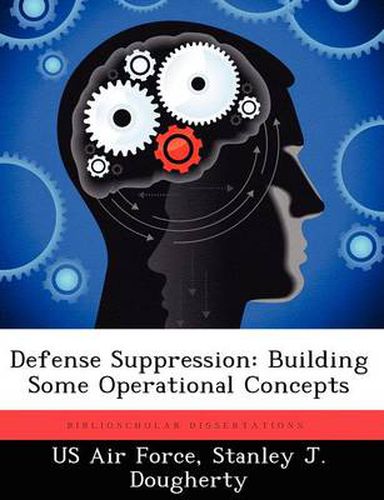Readings Newsletter
Become a Readings Member to make your shopping experience even easier.
Sign in or sign up for free!
You’re not far away from qualifying for FREE standard shipping within Australia
You’ve qualified for FREE standard shipping within Australia
The cart is loading…






This title is printed to order. This book may have been self-published. If so, we cannot guarantee the quality of the content. In the main most books will have gone through the editing process however some may not. We therefore suggest that you be aware of this before ordering this book. If in doubt check either the author or publisher’s details as we are unable to accept any returns unless they are faulty. Please contact us if you have any questions.
What operational principles and concepts should be used to defeat a highly capable ground-based, strategic air defense system? This study examines the theories of Carl von Clausewitz, Basil H. Liddell Hart, Giulio Douhet, and Col John A. Warden III, and reviews United States, British, and Israeli Air Force doctrines for concepts and principles to overcome defensive strength. A historical analysis of Linebacker II, the Yom Kippur War, the 1982 Bekaa Valley Operation, and Operation Desert Storm shows the value of maneuver, surprise, and mass in sustaining offensive airpower. Four operational concepts are presented: the indirect approach (maneuver), the stealth approach (surprise), the mass simultaneous attack (mass), and a balanced concept (mass and surprise). A 28-day war game examines their operational effectiveness. The war game demonstrated the high survivability of stealth aircraft at the expense of approximately 50 percent fewer targets destroyed. The mass concept illustrated the significant damage possible when a large-scale simultaneous attack saturates an air defense system. The balanced approach proved most robust, approaching the productivity of the mass concept (number of targets destroyed) and the efficiency of the stealth concept (cost of target destroyed). This study suggests the USAF should pursue stealth, stand-off weapons, real-time intelligence, drones, Wild Weasels, and electronic warfare technologies-while balancing them with a large inventory of relatively inexpensive multirole aircraft.
$9.00 standard shipping within Australia
FREE standard shipping within Australia for orders over $100.00
Express & International shipping calculated at checkout
This title is printed to order. This book may have been self-published. If so, we cannot guarantee the quality of the content. In the main most books will have gone through the editing process however some may not. We therefore suggest that you be aware of this before ordering this book. If in doubt check either the author or publisher’s details as we are unable to accept any returns unless they are faulty. Please contact us if you have any questions.
What operational principles and concepts should be used to defeat a highly capable ground-based, strategic air defense system? This study examines the theories of Carl von Clausewitz, Basil H. Liddell Hart, Giulio Douhet, and Col John A. Warden III, and reviews United States, British, and Israeli Air Force doctrines for concepts and principles to overcome defensive strength. A historical analysis of Linebacker II, the Yom Kippur War, the 1982 Bekaa Valley Operation, and Operation Desert Storm shows the value of maneuver, surprise, and mass in sustaining offensive airpower. Four operational concepts are presented: the indirect approach (maneuver), the stealth approach (surprise), the mass simultaneous attack (mass), and a balanced concept (mass and surprise). A 28-day war game examines their operational effectiveness. The war game demonstrated the high survivability of stealth aircraft at the expense of approximately 50 percent fewer targets destroyed. The mass concept illustrated the significant damage possible when a large-scale simultaneous attack saturates an air defense system. The balanced approach proved most robust, approaching the productivity of the mass concept (number of targets destroyed) and the efficiency of the stealth concept (cost of target destroyed). This study suggests the USAF should pursue stealth, stand-off weapons, real-time intelligence, drones, Wild Weasels, and electronic warfare technologies-while balancing them with a large inventory of relatively inexpensive multirole aircraft.